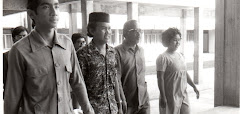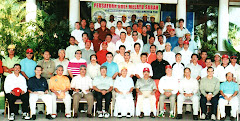I am presenting this only to my smart friends. See if you can figure out what these words have in common.
1 Banana
2 Dresser
3 Grammar
4 Potato
5 Revive
6 Uneven
7 Assess
Are you peeking or have you already given up? Give it another try . Look at each word carefully.
Answer: No, it is not that they all have at least 2 double letters.
(Thought I had the answer, but I did not go far enough.)
Answer:
In all of the words listed, if you take the first letter, place it at the end of the word,
and then spell the word backwards, it will be the same word.
Wednesday, September 17, 2008
Sunday, September 14, 2008
EYEING THE BENEFITS OF CYCLING
Benefits of Cycling
When looking to lose weight, diets rarely work long-term, regular exercise always does. Any type of regular exercise is of benefit, but cycling is particularly good because fewer injuries occur as a result of it.
Cycling is also a great calorie user which has various benefits.
According to the British Heart Foundation, cycling at least 20 miles per week reduces the risk of coronary heart disease to less than half that for non-cyclists.
Cycling at a gentle 12 mph on a flat road uses 450 kcal per hour. It also makes you feel younger and reduces stress. It is also claimed that cycling raises the speed of your metabolism for hours afterwards, so your body continues to burn calories even after exercise.
Cycling is mainly an aerobic activity (except when going uphill). This is beneficial to the lungs which expand to push as much oxygen into the body as possible and the heart which beats faster to transport this oxygen around your body. A strong heart and powerful lungs form the basis of general fitness.
Even if you cycle only a few miles per day, your muscles will gain the benefit, usually becoming trimmer and more toned. The main muscles you use when cycling are the upper thigh muscles, backside, and calf muscles.
Exercising releases what are known as endorphins into your blood - these create a feeling of contentment and happiness, therefore helping to reduce stress. Naturally, if you cycle in pleasant suroundings - your contentment level will be even greater!
Cycling is good for your heart and health
Everyday cycling, where the exercise leaves you breathing heavily but not being out of breath, is an effective and enjoyable form of aerobic exercise. This is the type of exercise that is most effective at promoting good health. For example, cycling reduces the risk of serious conditions such as heart disease, high blood pressure, obesity and the most common form of diabetes.1,2,3,4
One rough calculation suggests that new cyclists covering short distances can reduce their risk of death (mainly due to the reduction of heart disease) by as much as 22 per cent.
Cycling will help with weight management
Cycling can be part of a programme to lose weight2 because it burns the energy supplied by a chocolate bar or a couple of alcoholic drinks in an hour (about 300 calories). A 15-minute bike ride to and from work five times a week burns off the equivalent of 11 pounds of fat in a year.6 That kind of cycling pattern also meets the Government's latest target on exercise: that we should take part in some mild to moderate physical activity that leaves us out of breath for at least 30 minutes five times a week.
Cycling can improve your mood
Cycling can have positive effects on how we feel too.2 Moderate exercise has been found to reduce levels of depression and stress, improve mood and raise self-esteem, and has also been found to relieve symptoms of premenstrual syndrome.
Cycling can help to maintain strength and coordination
There can also be indirect benefits in terms of reducing injuries from falls, which can be seriously disabling, especially in older people. The strength and co-ordination that regular cycling brings make them less likely. Physically active older people have much reduced rates of hip fracture.
How cycling improves fitness
A study carried out for the Department of Transport found that 'even a small amount of cycling can lead to significant gains in fitness'. The study found that aerobic fitness was boosted by 11 per cent after just six weeks of cycling 'short distances' four times a week.8 If cycling the equivalent of four miles to and from work in total a day the aerobic benefit increased to 17 per cent.8
According to the Department of Transport study people who do not exercise who start cycling move from the third of the population who are the least fit, to the fittest half of the population in just a few months.8
Leg strength also improved in the cyclists in the study. This is more important than it seems because leg strength improves other mobility by allowing people to get out of chairs more easily, and helps older people especially avoid falls and the broken bones and other injuries associated with them.8
Cycling, the researchers behind the study concluded, is 'one of the few physical activities which can be undertaken by the majority of the population as part of a daily routine'.
Cyclists breathe in less fumes than car drivers
If you are worried about traffic fumes, there may be no need. Cyclists and pedestrians actually absorb lower levels of pollutants from traffic fumes than car drivers.
Who can cycle?
There are no real age barriers to cycling, and people of most fitness levels can cycle, slowly and gently if necessary. Anyone with heart disease or other conditions affecting their activity should, of course, consult their doctor before starting any exercise programme. Those of all body shapes and all but the most extreme body weights can ride a bike.
Getting Started
What sets cycling apart from most other forms of exercise is how well it fits into our busy, modern lifestyles. Apart from the bicycle itself (and a recommended protective helmet) no other equipment is needed, no special time needs to be set, and no special clothes are needed (although you might want to leave your best suit on the hanger). Instead of spending time stuck in a car or bus, you spend it on the bike, there is no need to find extra time to exercise.
It's as easy as riding a bike. You simply start to use a bike when you would otherwise have gone by car, bus, train or on foot. How much you ride depends on you, your fitness and your lifestyle. New cyclists could start off by using the bike to pop a few hundred yards down the road to the shops or the post box, and gradually increase the distance they cover. In a few weeks aerobic fitness will have improved and you will be able to ride for miles without feeling anything more than a little puffed out.
Helmets
There is still some argument, but there is increasing evidence that cycle helmets can reduce the number and severity of head injuries in cyclists. To be any good at all the helmet must be worn correctly and be close fitting without being pushed to the back of the head. Get expert advice from someone in a bike shop. But remember, the health benefits of cycling significantly outweigh the risks of cycling.
Keep at it
Most cyclists are 'utility' cyclists where the bike is a way of getting from A to B, and getting some exercise is an added bonus. Nearly three-quarters of journeys people make are of five miles or less, and these could be acheived by most people.12 On reasonably flat ground you will soon be able to cover at least four to six miles in half an hour - faster than cars in many towns and cities.
But those bitten by the bike bug may improve their fitness and may make long rides to work, or may choose to go leisure cycling where they cover 30-50 miles a day.
Competitive individuals may want to start racing - against other cyclists or against the clock.
Fitter individuals with a taste for adventure may choose to try mountain biking, speeding down specially made trails on the side of hills, leaping over dips and jumping over obstacles.
These more active cyclists are likely to increase their health benefits. In general the more active an individual is, the healthier they are. But, whichever form of cycling you choose to pursue, remember to have fun while you're doing it. As you are whizzing past drivers stuck in a queue, you can enjoy the fact that not only are you getting to your destination quicker, but you are getting fit at the same time.
When looking to lose weight, diets rarely work long-term, regular exercise always does. Any type of regular exercise is of benefit, but cycling is particularly good because fewer injuries occur as a result of it.
Cycling is also a great calorie user which has various benefits.
According to the British Heart Foundation, cycling at least 20 miles per week reduces the risk of coronary heart disease to less than half that for non-cyclists.
Cycling at a gentle 12 mph on a flat road uses 450 kcal per hour. It also makes you feel younger and reduces stress. It is also claimed that cycling raises the speed of your metabolism for hours afterwards, so your body continues to burn calories even after exercise.
Cycling is mainly an aerobic activity (except when going uphill). This is beneficial to the lungs which expand to push as much oxygen into the body as possible and the heart which beats faster to transport this oxygen around your body. A strong heart and powerful lungs form the basis of general fitness.
Even if you cycle only a few miles per day, your muscles will gain the benefit, usually becoming trimmer and more toned. The main muscles you use when cycling are the upper thigh muscles, backside, and calf muscles.
Exercising releases what are known as endorphins into your blood - these create a feeling of contentment and happiness, therefore helping to reduce stress. Naturally, if you cycle in pleasant suroundings - your contentment level will be even greater!
Cycling is good for your heart and health
Everyday cycling, where the exercise leaves you breathing heavily but not being out of breath, is an effective and enjoyable form of aerobic exercise. This is the type of exercise that is most effective at promoting good health. For example, cycling reduces the risk of serious conditions such as heart disease, high blood pressure, obesity and the most common form of diabetes.1,2,3,4
One rough calculation suggests that new cyclists covering short distances can reduce their risk of death (mainly due to the reduction of heart disease) by as much as 22 per cent.
Cycling will help with weight management
Cycling can be part of a programme to lose weight2 because it burns the energy supplied by a chocolate bar or a couple of alcoholic drinks in an hour (about 300 calories). A 15-minute bike ride to and from work five times a week burns off the equivalent of 11 pounds of fat in a year.6 That kind of cycling pattern also meets the Government's latest target on exercise: that we should take part in some mild to moderate physical activity that leaves us out of breath for at least 30 minutes five times a week.
Cycling can improve your mood
Cycling can have positive effects on how we feel too.2 Moderate exercise has been found to reduce levels of depression and stress, improve mood and raise self-esteem, and has also been found to relieve symptoms of premenstrual syndrome.
Cycling can help to maintain strength and coordination
There can also be indirect benefits in terms of reducing injuries from falls, which can be seriously disabling, especially in older people. The strength and co-ordination that regular cycling brings make them less likely. Physically active older people have much reduced rates of hip fracture.
How cycling improves fitness
A study carried out for the Department of Transport found that 'even a small amount of cycling can lead to significant gains in fitness'. The study found that aerobic fitness was boosted by 11 per cent after just six weeks of cycling 'short distances' four times a week.8 If cycling the equivalent of four miles to and from work in total a day the aerobic benefit increased to 17 per cent.8
According to the Department of Transport study people who do not exercise who start cycling move from the third of the population who are the least fit, to the fittest half of the population in just a few months.8
Leg strength also improved in the cyclists in the study. This is more important than it seems because leg strength improves other mobility by allowing people to get out of chairs more easily, and helps older people especially avoid falls and the broken bones and other injuries associated with them.8
Cycling, the researchers behind the study concluded, is 'one of the few physical activities which can be undertaken by the majority of the population as part of a daily routine'.
Cyclists breathe in less fumes than car drivers
If you are worried about traffic fumes, there may be no need. Cyclists and pedestrians actually absorb lower levels of pollutants from traffic fumes than car drivers.
Who can cycle?
There are no real age barriers to cycling, and people of most fitness levels can cycle, slowly and gently if necessary. Anyone with heart disease or other conditions affecting their activity should, of course, consult their doctor before starting any exercise programme. Those of all body shapes and all but the most extreme body weights can ride a bike.
Getting Started
What sets cycling apart from most other forms of exercise is how well it fits into our busy, modern lifestyles. Apart from the bicycle itself (and a recommended protective helmet) no other equipment is needed, no special time needs to be set, and no special clothes are needed (although you might want to leave your best suit on the hanger). Instead of spending time stuck in a car or bus, you spend it on the bike, there is no need to find extra time to exercise.
It's as easy as riding a bike. You simply start to use a bike when you would otherwise have gone by car, bus, train or on foot. How much you ride depends on you, your fitness and your lifestyle. New cyclists could start off by using the bike to pop a few hundred yards down the road to the shops or the post box, and gradually increase the distance they cover. In a few weeks aerobic fitness will have improved and you will be able to ride for miles without feeling anything more than a little puffed out.
Helmets
There is still some argument, but there is increasing evidence that cycle helmets can reduce the number and severity of head injuries in cyclists. To be any good at all the helmet must be worn correctly and be close fitting without being pushed to the back of the head. Get expert advice from someone in a bike shop. But remember, the health benefits of cycling significantly outweigh the risks of cycling.
Keep at it
Most cyclists are 'utility' cyclists where the bike is a way of getting from A to B, and getting some exercise is an added bonus. Nearly three-quarters of journeys people make are of five miles or less, and these could be acheived by most people.12 On reasonably flat ground you will soon be able to cover at least four to six miles in half an hour - faster than cars in many towns and cities.
But those bitten by the bike bug may improve their fitness and may make long rides to work, or may choose to go leisure cycling where they cover 30-50 miles a day.
Competitive individuals may want to start racing - against other cyclists or against the clock.
Fitter individuals with a taste for adventure may choose to try mountain biking, speeding down specially made trails on the side of hills, leaping over dips and jumping over obstacles.
These more active cyclists are likely to increase their health benefits. In general the more active an individual is, the healthier they are. But, whichever form of cycling you choose to pursue, remember to have fun while you're doing it. As you are whizzing past drivers stuck in a queue, you can enjoy the fact that not only are you getting to your destination quicker, but you are getting fit at the same time.
Eyeing the Orang Asal plight
KUALA LUMPUR: Police yesterday stopped a march by a group of indigenous people seeking greater protection of their rights.
The memorandum was to urge the government to honour the United Nations Declaration for the Rights of Indigenous People (DRIP), to which Malaysia is a signatory.
Their demands included the establishment of an Orang Asli native court in Peninsular Malaysia, the repeal of laws which marginalise the Orang Asal or indigenous people and an end to the government's practise of leasing native customary rights land without consulting native communities.
Today is the first anniversary of the DRIP.
However, police ordered the group to disperse just as it stepped out of the building at 10.15am.
They claimed that police had earlier assured them that the march could go on.
"We were given assurances this morning.
"All we want is to walk to the palace to hand over the memorandum," JOAS president Adrian Lasimbang said.
Lasimbang said JOAS had sent letters to the authorities and palace officials two weeks ago to notify them of the march.
"But the police only responded two days ago. They sent us a letter asking us to go to the police station."
Dang Wangi police chief ACP Mohamad Zulkarnain Abdul Rahman said the police stopped the march because the organisers had failed to obtain a permit.
Forced to disperse, the group retreated into the Central Market building.
There, Lasimbang and two other JOAS representatives briefed the media on the contents of the memorandum.
The nine-page memorandum highlighted articles from the DRIP and the plight of the indigenous peoples of Malay-sia.
Among the issues were encroachment on native customary rights land, violation of the right to self-governance and pressures to assimilate.
"JOAS has carried out a study comparing the declaration with local policies concerning Orang Asal," said Lasimbang.
"It is sad that the policies don't meet the standards. We Orang Asal have been marginalised for so long.
"The government has a commitment to implement all policies according to the declaration
"The handing over of the memorandum to the king is a symbolic gesture.
"We want to create more awareness about our problems and hope the public will respect us," JOAS member Mark Bujang said.
He said the Orang Asli had been labelled "anti-development and anti-establishment" for decades.
"We're not anti-development. We just want it on our terms and any development must benefit our communities.
"We want to be included in the decision-making process."
Bujang said native land issues were especially important because the Orang Asli's identities were related to the land.
"Our lives are tied to the land. Land is sacred to us. How can you take our native land from us?"
Lifir Tangkak from the Jakun settlement of Kampung Buluh Nipis, Pahang, took an eight-hour bus ride to lend his support to the cause.
"The authorities don't recognise our rights. They take our land indiscriminately.
"This must stop," the 70-year-old said.
Subscribe to:
Comments (Atom)














































